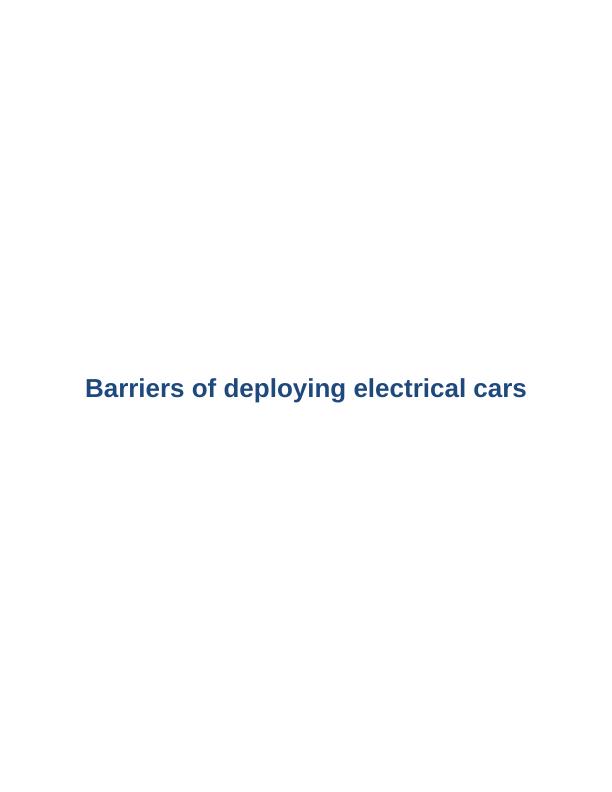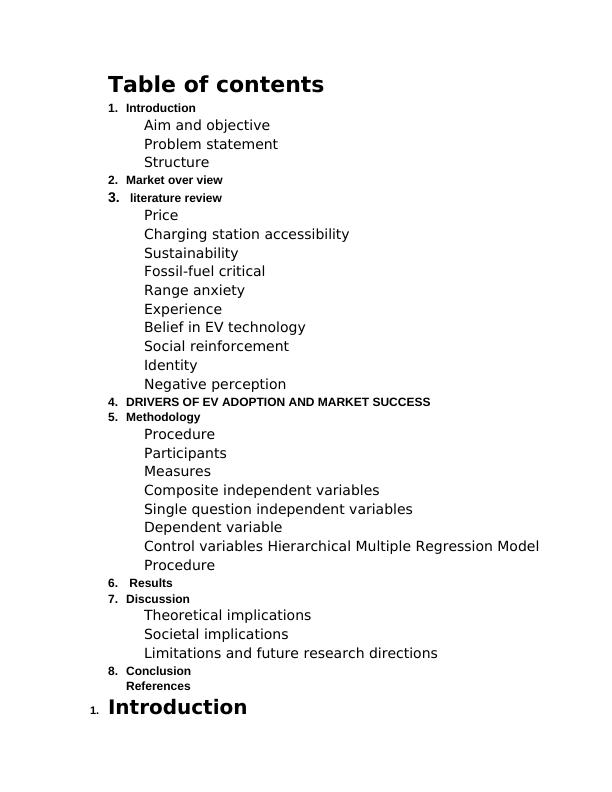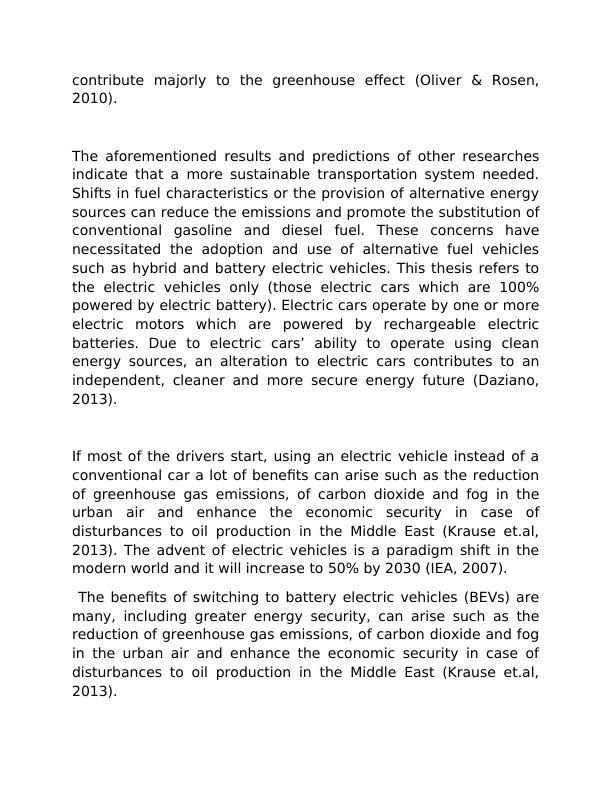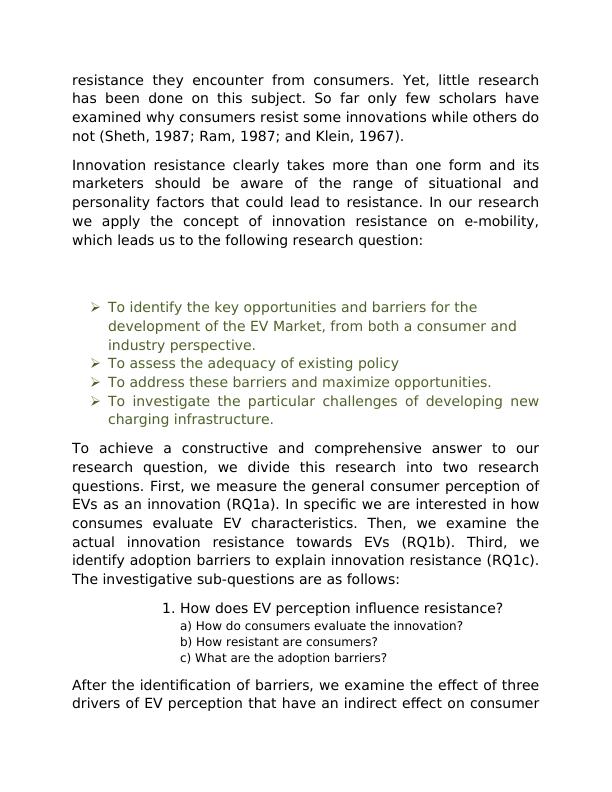Barriers of Deploying Electrical Cars Assignment 2022
This assignment discusses the barriers of deploying electric cars, including market overview, literature review, price, charging station accessibility, sustainability, fossil-fuel critical, range anxiety, experience, belief in EV technology, social reinforcement, identity, negative perception, drivers of EV adoption and market success, methodology, results, discussion, theoretical implications, societal implications, limitations, future research directions, and conclusion.
Added on 2022-10-03
Barriers of Deploying Electrical Cars Assignment 2022
This assignment discusses the barriers of deploying electric cars, including market overview, literature review, price, charging station accessibility, sustainability, fossil-fuel critical, range anxiety, experience, belief in EV technology, social reinforcement, identity, negative perception, drivers of EV adoption and market success, methodology, results, discussion, theoretical implications, societal implications, limitations, future research directions, and conclusion.
Added on 2022-10-03
End of preview
Want to access all the pages? Upload your documents or become a member.








